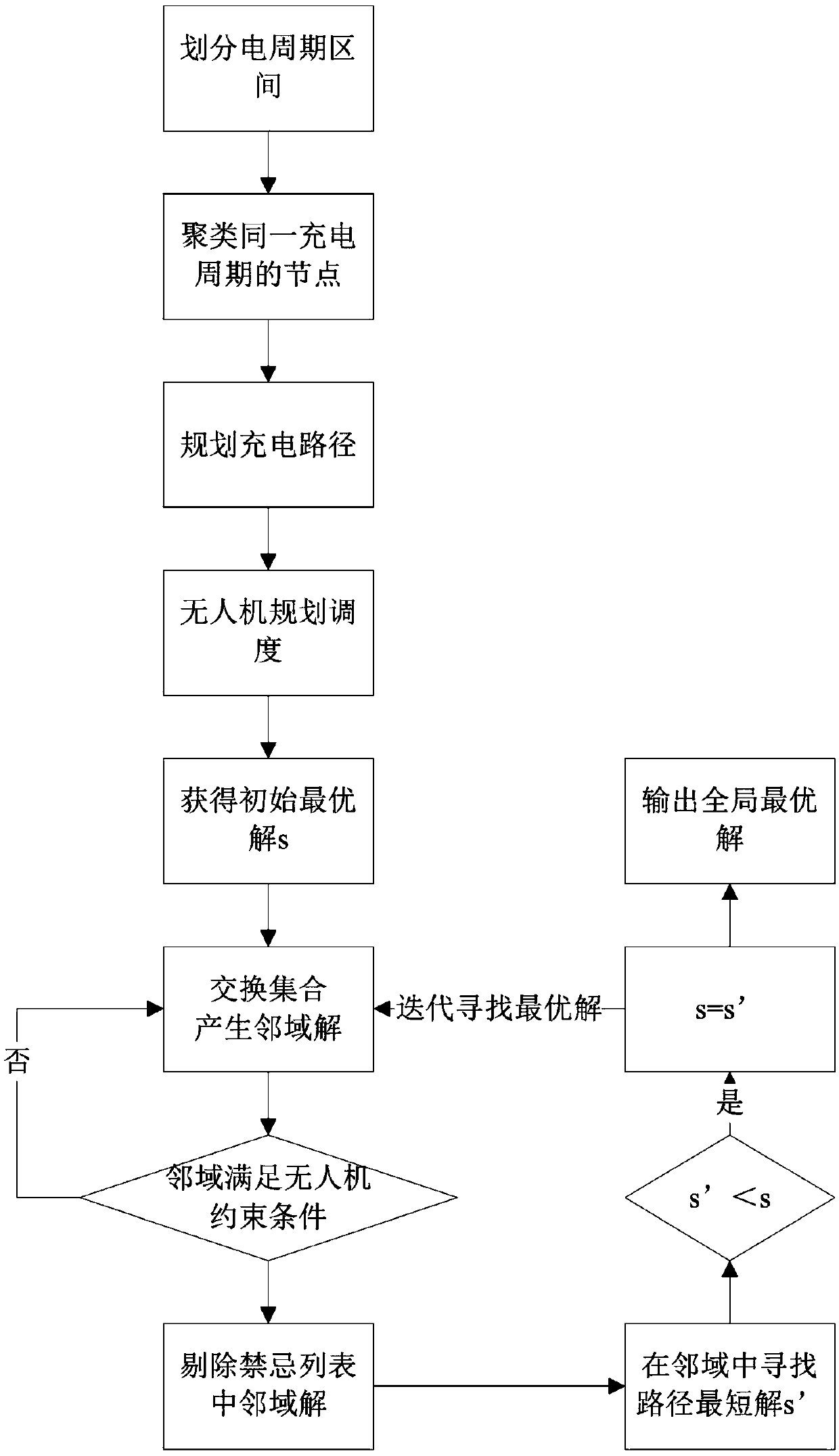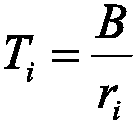An unmanned aerial vehicle charging task scheduling method in a wireless sensor network
A wireless sensor and task scheduling technology, applied in the direction of instruments, data processing applications, forecasting, etc., can solve the problem that the battery capacity is easily affected by the environment and climate factors, the sensor node covers a large range, and the battery capacity does not have a large increase. Achieve the effects of improving charging efficiency, wide application range, and reducing charging time
- Summary
- Abstract
- Description
- Claims
- Application Information
AI Technical Summary
Problems solved by technology
Method used
Image
Examples
Embodiment Construction
[0062] The following will clearly and completely describe the technical solutions in the embodiments of the present invention in conjunction with the embodiments of the present invention. Obviously, the described embodiments are only part of the embodiments of the present invention, not all of them. Based on the implementation manners in the present invention, all other implementation manners obtained by persons of ordinary skill in the art without making creative efforts belong to the scope of protection of the present invention.
[0063] Such as figure 1 Shown, the unmanned aerial vehicle charging task scheduling method in a kind of wireless sensor network of the present invention, it comprises the following steps:
[0064] S1. Preliminarily classify the nodes according to the power consumption rate of each node in the sensor network, divide the nodes into different charging cycle intervals according to the classification number of the preliminary classification, and the nod...
PUM
 Login to View More
Login to View More Abstract
Description
Claims
Application Information
 Login to View More
Login to View More - R&D
- Intellectual Property
- Life Sciences
- Materials
- Tech Scout
- Unparalleled Data Quality
- Higher Quality Content
- 60% Fewer Hallucinations
Browse by: Latest US Patents, China's latest patents, Technical Efficacy Thesaurus, Application Domain, Technology Topic, Popular Technical Reports.
© 2025 PatSnap. All rights reserved.Legal|Privacy policy|Modern Slavery Act Transparency Statement|Sitemap|About US| Contact US: help@patsnap.com



